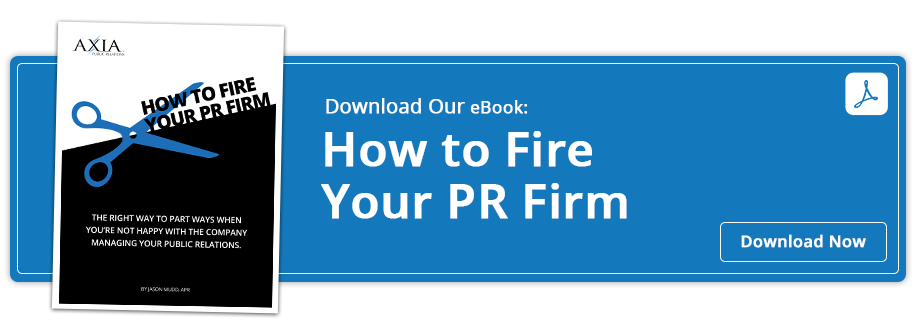Hourly billing models are outdated and underserve modern client relationships. Here’s why.
 As a prospective client exploring public relations solutions, you may default to paying agencies via Reginald Heber Smith's long-prevailing hourly billing approach. Charging for time and materials once sufficed in purely labor-driven relationships, but this model is now antiquated. We must reconsider hourly billing, given modern clients' needs and partnership dynamics.
As a prospective client exploring public relations solutions, you may default to paying agencies via Reginald Heber Smith's long-prevailing hourly billing approach. Charging for time and materials once sufficed in purely labor-driven relationships, but this model is now antiquated. We must reconsider hourly billing, given modern clients' needs and partnership dynamics.
Audio: Listen to this article.
Forward-looking brands are increasingly shifting toward value-based pricing for optimized agency agreements.
The Shortcomings of Hourly Billing
Charging by time investments maintains dominance from convention and simplicity rather than suitability. At the surface level, hourly billing appears fair: Agencies clock hours invested per project, and clients pay set rates based on effort logged. Clean and tidy.
This structure misprices services by disconnecting work expenditures from business impact. Several issues commonly arise:
1. Misaligned Incentives
Under hourly agreements, agencies may drag activities out rather than streamline efficiencies since getting compensated for more hours takes priority over client goals. The agency wins by doing more stuff. Clients lose overall despite paying more.
2. Little Focus on Outcomes
With fees based purely on workload over results, agencies concentrate on tallying billable hours versus deliberately moving key performance indicators like leads, revenue, and awareness. You lack assurance that their busyness drives your success.
3. Penalizes Innovation
Hourly billing financially disincentivizes agencies from refining strategies, tools, and processes to achieve better productivity. If finishing faster earns them less, why upgrade? Again, you pay the price through stalled progress.
4. Breeds Distrust
Since compensation flows independently from quality work or client satisfaction, suspicions about overbilling often emerge. Whether you gain tremendous value or not, the agency gets paid the same, which strains business relationships.
5. Caps Agency Profit Potential
Agencies cannot earn higher income or margins despite maximum effort since per-hour pricing locks them into a set rate, which removes bonuses for further achievement from the table.
6. Primitive Mindset
Particularly as marketing, media, and client needs to evolve, viewing agencies as interchangeable vendors who bill for static man-hours no longer suffices given modern speed and complexity. The structure fails to support chasing bold outcomes as there is no additional incentive for those achievements beyond the minimum agreed on.
How to Transition to Value-Based Pricing
Forward-looking brands increasingly shake off dated hourly conventions by linking agency compensation directly to tangible value creation via value-based pricing. This improved model charges based on delivered outcomes and actual performance impact rather than mere workload tallies. Here’s how it works:
1. Customized Pricing
Agencies first help identify your organization’s highest priority goals and key results required for PR and marketing success. Exact key performance indicators are confirmed upfront.
2. Outcome-Focused Plans
Strategists then develop integrated plans for achieving those metrics through concrete awareness, lead, and sales outcomes. Goals remain central, not activity metrics.
3. Shared Risk
While agencies guarantee predefined KPI lifts, some risk is collectively managed based on actual results achieved. You pay fair rates for progress made even if targets get missed.
4. Improved Alignment
With agencies earning more compensation for delivering measurable impact, win-win alignments emerge. Your goals become their goals. All stakeholders focus on what matters most: moving the needle.
5. Value-Driven Fees
Finally, agencies propose pricing bundles based on the perceived value of driving promised results. Fees should equate to a reasonable ROI on heightened performance.
The Case for Value-Based Pricing
Shifting from hourly to value-pricing models counters many inherent flaws in traditional billing practices, especially:
- Focusing everyone on agreed-upon, needle-moving business objectives
- Promoting trust and transparency around displayed value
- Allowing highly effective agencies to earn superior compensation
- Fostering innovation by concentrating on efficiency
- Creating partnerships built on shared priorities and motivations
While no model proves flawless, value-pricing better supports modern strategic relationships where both parties focus on progress rather than process. As marketing complexity accelerates, ensuring pricing evolves along with needed capabilities proves critical to staying ahead.
Want to work with an agency that strives to exceed expectations? Contact us today or book a one-on-one consultation to get started.
Photo by Pixabay
Topics: PR tips


Comment on This Article